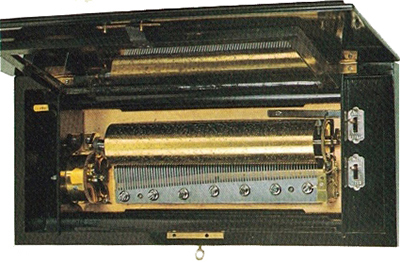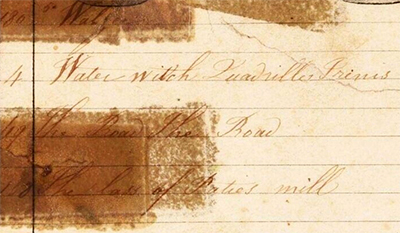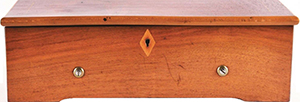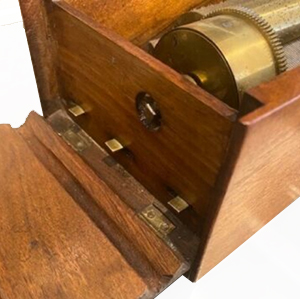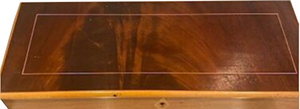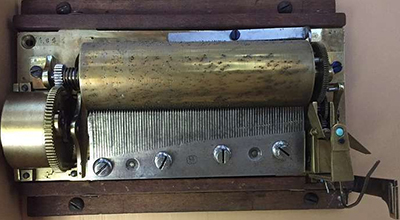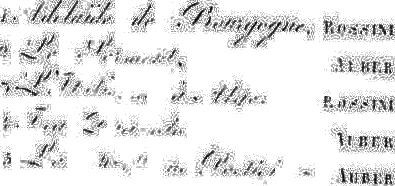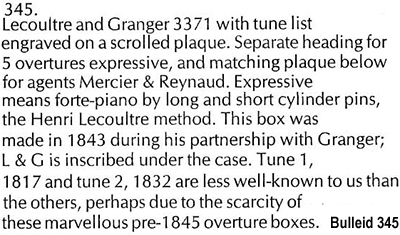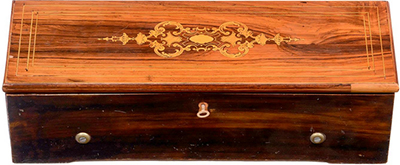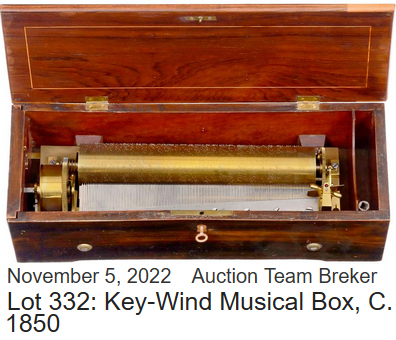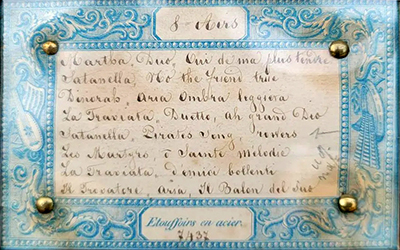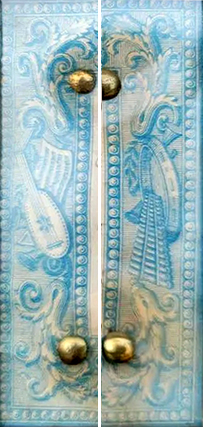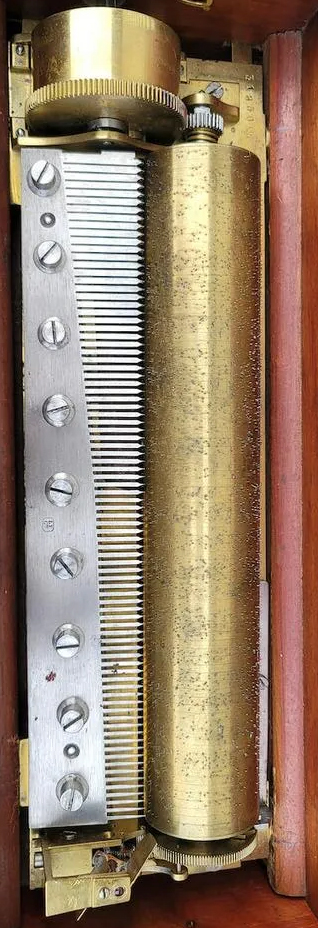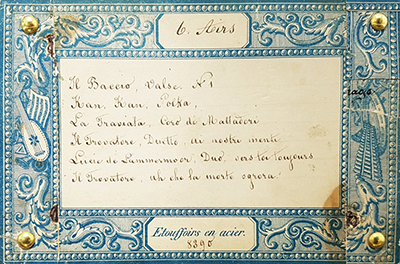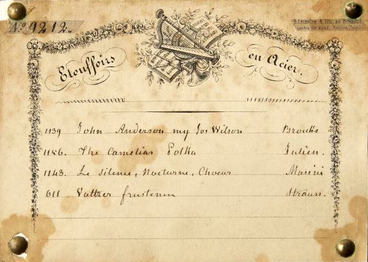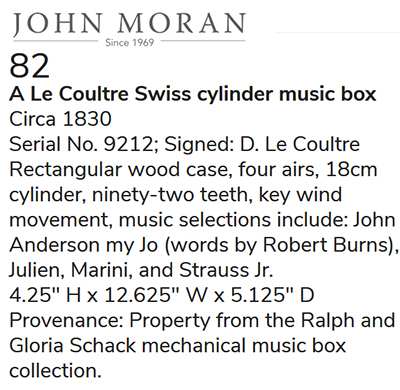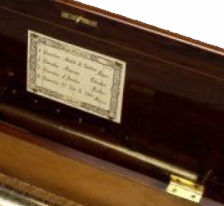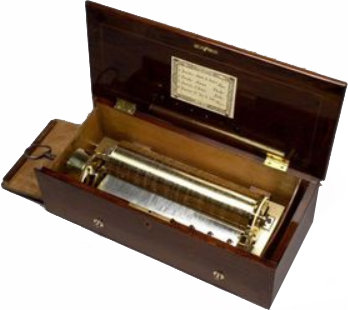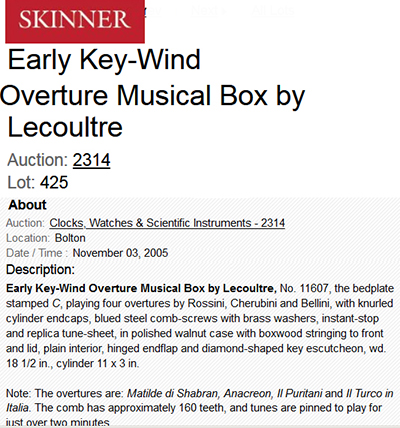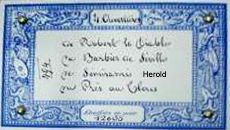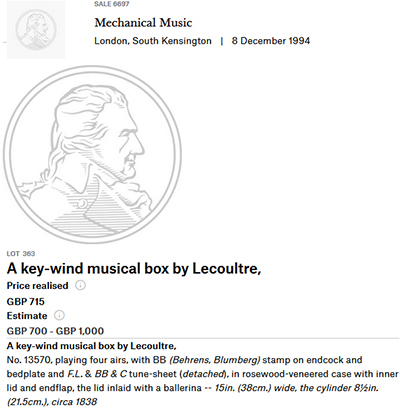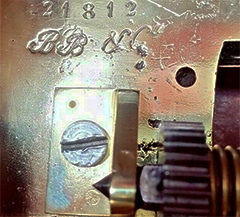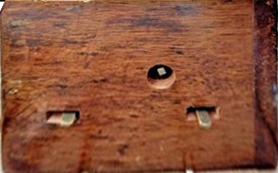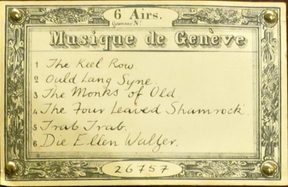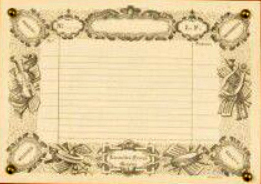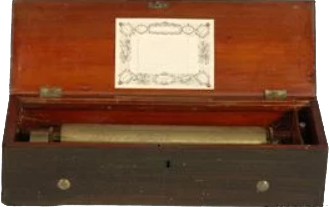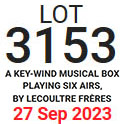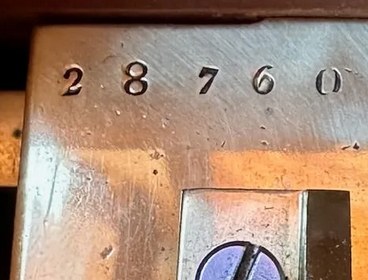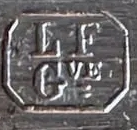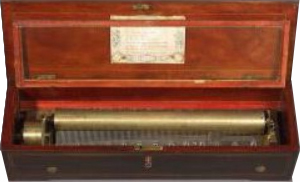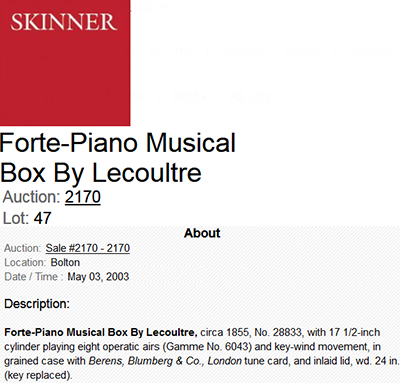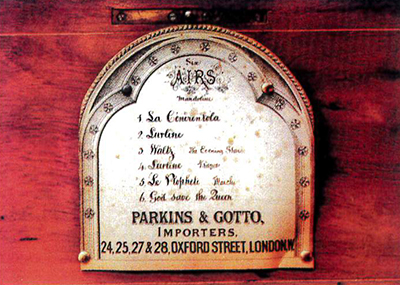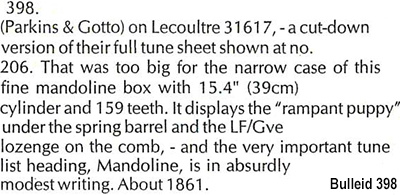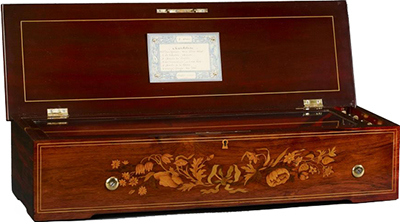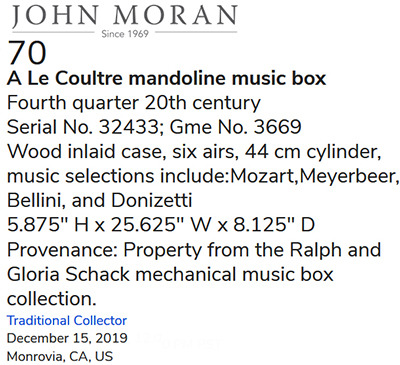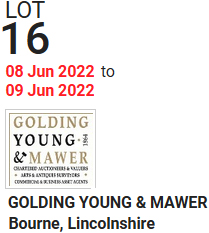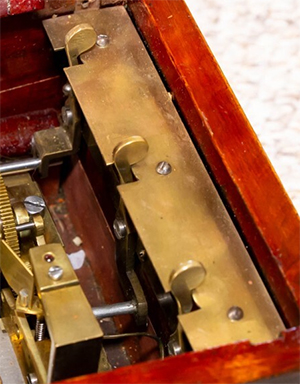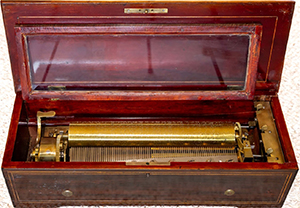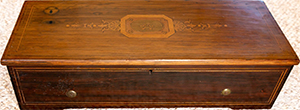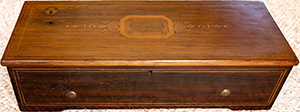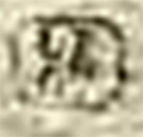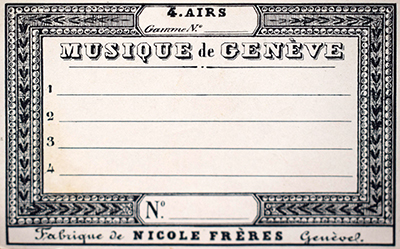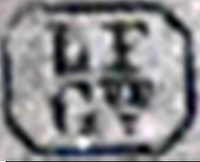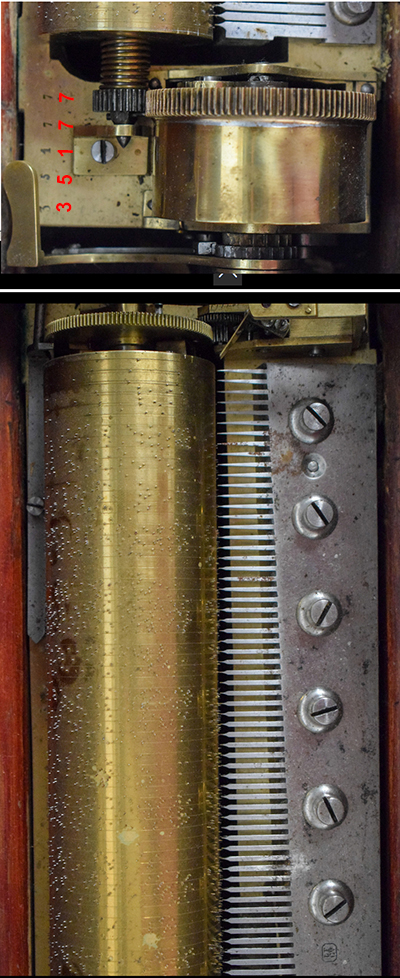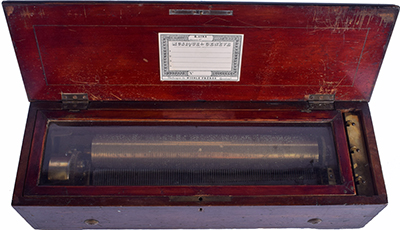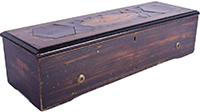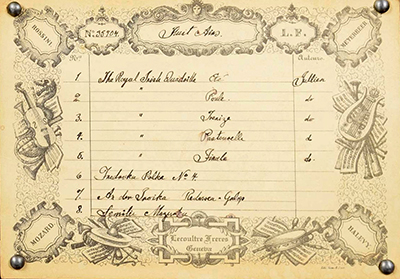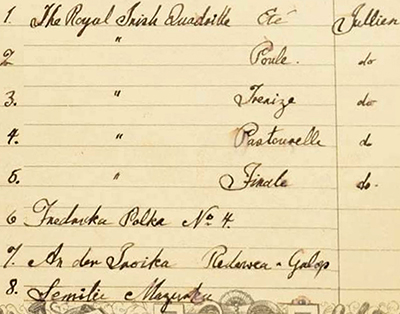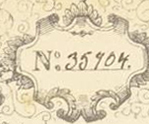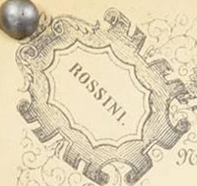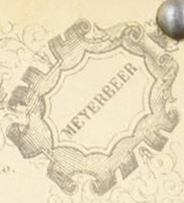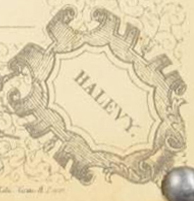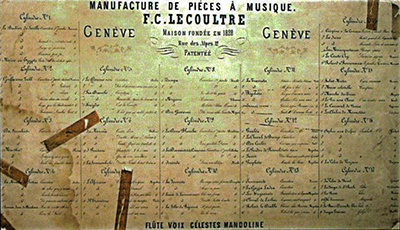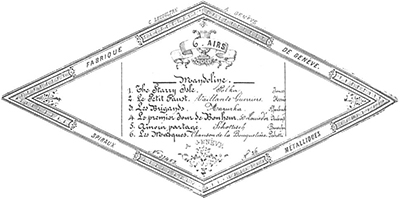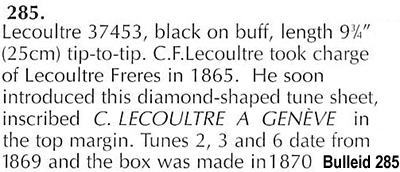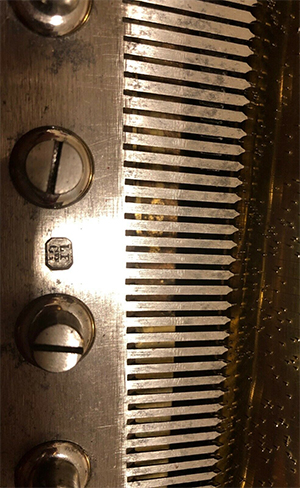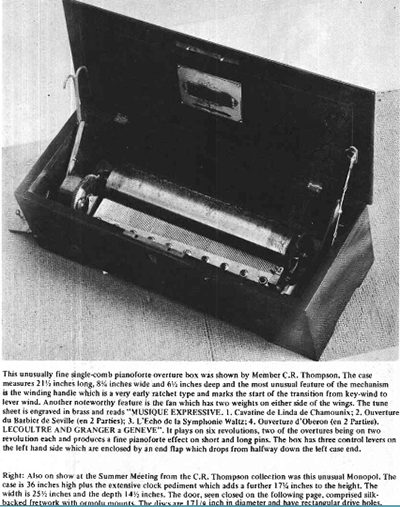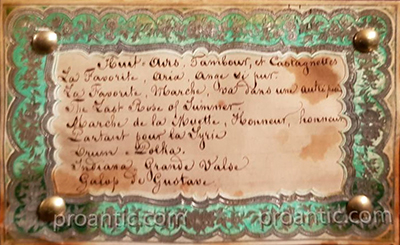|
Music boxes by a Lecoultre Frères To oblige an agent, the exact name of the maker was often omitted!
[1], [2], 3164, 3371, 3560, 7437, 8390, 9212, 11607, 12635, 13570, GAP of the serials, 21812, 22406, 26364, 26757, 27510, 28009, 28760, 28833, 31483, 31617, 31637, 32358, 32433, 32572, 32738, 33990, 34001, 35177, 35404, 37112, 37453, 38377, Letzte Rose [1] No number
[2] No number
N° 3164
N° 3371
N° 3560
No. 3560, probably Lecoultre, playing four airs, with 154 teeth in comb (complete), washerless comb-screws, brass bedplate, governor with (added?) brass weights, instant-stop control, grained case with red interior, hinged endflap, veneered and inlaid lid, wd. 17 in. (43 cm), cylinder 10¾ in. (27 cm), good overhauled playing condition but slow, governor in need of adjustment. With a oversized steel key. An early musical box with very pleasing arrangements.
N° 7437
N° 8390
N° 9212
N° 11607
N° 12635
N° 13570
N° 21812
N° 22406
N° 26364
N° 26757
N° 27510
N° 28009
N° 28760
N° 28833
N° 31483
N° 31617
N° 31637 LG/Gve (Geneva Lecoultres) “Lecoultre Serial No. 31637 is a pretty definite proof that, as always suspected, the Lecoultres at Geneva and at Le Brassus worked closely together. No. 31637 is playing six airs with 12“ (33 cm) cylinder has one of their common type of tune sheet with L.F. in a cartouche at top right and B.B. & C. in an even fancier cartouche at bottom center. It is inscribed, above the tune names, Deux Claviers (two combs). The main comb is stamped LG/Gve in a lozenge, the mark of the Geneva Lecoultres. The second comb, with 37 unusually short teeth for piccolo effect, is stamped LB, probably for the Lecoultres at Le Brassus, near Le Sentier where they started comb making in 1820. The old road wandered for 35 miles and climbed 2,200 feet from Geneva to Le Brassus and there is no doubt that many combs made that journey. The Lecoultres were in the forefront of many early-years improvements to musical boxes, and they made all contemporary types. Among their many first class overture boxes special mention should be made of the excellent results they obtained with the modest format of a six-air movement. These played three overtures at one-half-per-turn using standard 13“ (33 cm) cylinders. Track widths were reduced to 0.016“ (0.4 mm) allowing 135 comb teeth. With the usual cylinder surface speed of 0.10“ (2.5 mm) per second each overture lasted a full of two minutes. They are excellent performers, usually with tune sheets and sometimes bedplates inscribed B B & C for agents Berens, Blumberg & Cie., and they are less appreciated than they deserve.” (Bulleid, Technology, p. 21) N° 32358: 8 Air, Cranked Leverwind, 102 teeth, Cyl. 33 cm, Ø 5,0 cm Paul Bellamy, The Cylinder Musical Box, p. 85, Figure 3 (Octaves and Intervals Used) N° 32433
N° 32572
N° 32738
N° 33990
N° 34001
N° 35177
N° 35404
N° 37112 F. C. Lecoultre
N° 37453
N° 38377
Lecoultre & Granger
Letzte Rose
|
